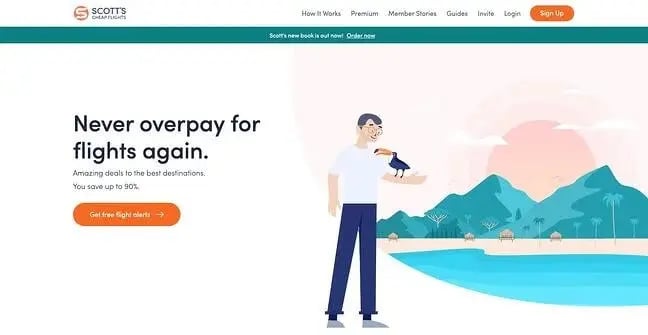Website Design Strategies to Ensure Your Site is Visually Appealing and User-Friendly
Website Design Strategies to Ensure Your Site is Visually Appealing and User-Friendly
Blog Article
Modern Internet Site Style That Captures Attention and Transforms
In an increasingly digital landscape, modern-day web site style has arised as a crucial aspect in catching individual attention and driving conversions. As we check out these important components, it comes to be clear that understanding their interaction can substantially impact an internet site's efficiency and customer complete satisfaction.
Importance of Visual Power Structure
Aesthetic pecking order is a crucial element in internet site design, as it guides individuals' focus and improves their total experience. By purposefully organizing web content, developers can route customers to the most crucial details first, thus increasing engagement and improving use.
Including a sensible flow in material arrangement is essential; for example, putting one of the most critical info at the top of a web page promotes immediate acknowledgment. Regular use of typography, such as differing font dimensions and styles, helps establish a clear web content structure. This company not only aids in navigation yet also develops trust, as customers really feel more comfy when they can conveniently locate what they are seeking.
Ultimately, a well-executed visual hierarchy not only enhances aesthetic appeal but also dramatically affects customer habits. By prioritizing crucial elements and making sure a smooth experience, designers can properly convert site visitors right into consumers, enhancing the significance of this fundamental design principle in modern-day internet site development.
Responsive Style for All Gadgets
Producing a smooth experience throughout numerous devices is vital in today's digital landscape, where customers accessibility internet sites from desktop computers, tablet computers, and mobile phones alike. Responsive design is an important strategy that makes certain web sites adjust fluidly to various screen dimensions, positionings, and resolutions. By employing adaptable grids, photos, and CSS media questions, developers can create formats that preserve visual integrity and capability, despite the gadget being used.
The relevance of receptive design prolongs past appearances; it directly impacts customer involvement and conversion rates. An internet site that functions well on all devices encourages longer brows through and minimizes bounce prices, as individuals are most likely to engage with web content that is simple to navigate. Search engines, particularly Google, focus on mobile-friendly websites in their rankings, making receptive layout a vital component of search engine optimization (SEARCH ENGINE OPTIMIZATION)
Incorporating receptive layout not just boosts user experience however also enhances the growth procedure. By developing a solitary website that functions across tools, services can conserve time and sources compared to establishing different mobile and desktop versions. Inevitably, receptive layout is a fundamental method for modern website design, ensuring accessibility and complete satisfaction for all customers, no matter their device.
Involving Interactive Elements
While a receptive layout prepares for a useful website, incorporating engaging interactive components is crucial for catching user focus and cultivating much deeper links. Website Design. Interactive elements, such as animations, tests, and clickable infographics, create a more vibrant user experience, motivating site visitors to spend more time on the website
Incorporating interactive functions can likewise direct customers through complex info, making it simpler to digest material. For instance, interactive sliders can illustrate item variants, while embedded video clips can give demonstrations or testimonies that resonate greater than fixed pictures or text. Furthermore, gamification methods, like benefits for involving or finishing tasks with web content, can enhance user motivation and retention.
Effective use interactive aspects not only improves the individual experience however can also bring about higher conversion prices. By making interactions pleasurable and interesting, services can cultivate a sense of loyalty and hop over to these guys trust fund with their target market. It is vital to stabilize interactivity with efficiency; extremely complicated attributes may hinder site rate, negatively influencing user contentment. Eventually, integrating properly designed interactive elements can substantially raise a website's efficacy, driving interaction and conversions in today's affordable digital landscape.
Streamlined Navigation Practices
Efficient navigating is a cornerstone of any kind of effective web site, as it directly affects user experience and web content availability. Streamlined navigation methods make sure that individuals can conveniently locate info, improving their interaction with the website. A well-structured navigation food selection need to be basic and instinctive, commonly featuring a restricted variety of main groups to avoid frustrating visitors.
To achieve structured navigation, designers must focus on a hierarchical structure that rationally arranges content. Carrying out breadcrumb routes can provide individuals with context concerning browse this site their current place within the website, permitting seamless backtracking. Furthermore, making use of drop-down food selections can successfully save room while still giving access to subcategories.
Receptive design is critical, as navigation should be useful throughout all tools (Website Design). Mobile customers, in particular, advantage from touch-friendly menus and retractable areas that maintain use without compromising visual appeals

Reliable Call-to-Action Strategies
A well-crafted call-to-action (CTA) is vital for guiding users toward desired results on a web site, as it motivates them to engage with material or make an acquisition. To maximize their performance, CTAs must be clear, engaging, and strategically positioned throughout the website.
First, use action-oriented language that connects seriousness or worth, such as "Get going," "Sign up with Now," or "Case Your Discount rate." This language not just inspires individuals however likewise establishes clear expectations regarding the next steps.
Second, think about layout aspects; CTAs must stand out visually through contrasting colors, sufficient whitespace, and prominent positioning. A button that is simple to see and click boosts the probability of customer communication.
Additionally, individualizing CTAs based on user actions or demographics can significantly improve involvement. Tailored messages reverberate much more with individuals, driving greater conversion rates.

Final Thought
In verdict, modern-day web site design emphasizes the assimilation of aesthetic hierarchy, receptive designs, involving interactive aspects, structured navigating, home and reliable call-to-action approaches. These elements collectively enhance customer experience, guaranteeing that site visitors continue to be involved and motivated to explore web content even more. By prioritizing these style principles, businesses can considerably boost individual retention and conversion prices, eventually resulting in higher success in the electronic landscape. The constant advancement of web style emphasizes its vital role in reliable online interaction and advertising and marketing.
In a significantly digital landscape, modern internet site style has arised as a crucial aspect in capturing individual focus and driving conversions.Visual power structure is an important aspect in web site layout, as it guides individuals' focus and enhances their overall experience.The importance of receptive layout extends past aesthetics; it directly influences customer involvement and conversion prices.Including responsive layout not only improves customer experience yet additionally simplifies the development procedure. Ultimately, receptive layout is a basic technique for modern-day website layout, making sure availability and complete satisfaction for all customers, no matter of their device.
Report this page